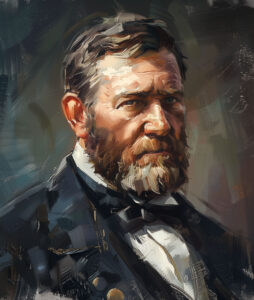Abraham Lincoln: The name alone conjures up images from your earliest school days. A gangling youth reading by firelight in a log cabin. The Gettysburg Address. The Emancipation Proclamation. That fateful night at Ford’s Theater. Over time, however, your image of Lincoln has doubtless matured. Three recently published histories will further expand and refine readers’ understanding—and perhaps even alter the world’s view—of the nation’s 16th president.
In Lincoln President-Elect: Abraham Lincoln and the Great Secession Winter of 1860-1861, Harold Holzer examines the four eventful months between Lincoln’s election and inauguration when, as one earlier biographer noted, “The difficulties of Mr. Lincoln’s position…have been but little understood.”
Lincoln’s actions—or, as some historians have characterized it, his inaction—during this crucial period have been interpreted as the “vulnerable soft spot” in Lincoln’s “otherwise sterling reputation.” The president-elect came to be viewed as too silent on the crucial issues of slavery and states’ rights, too indecisive in selecting members of his cabinet and too indifferent about the looming crisis of civil war. Meanwhile, public scrutiny of the soon-to-be chief executive was in – tense. Skeptics in and out of politics feared that Lincoln was not really equipped to be president.
Holzer takes exception to that view of Lincoln, and with fascinating detail documents the president-elect’s emergence from untested prairie politician to shrewd national leader. “Under Lincoln’s patient stewardship,” Holzer writes, “ex-Whigs and ex-Democrats, Northerners and border state men, progressives and conservatives ultimately came together to serve the Union—and the new president.”
Holzer’s finely tuned narrative, to mirror his own description of Lincoln’s first inaugural address, will “appeal both to ordinary and sophisticated audiences.” Extensive, informative endnotes and an epilogue, as well as the entire text of Lincoln’s 1861 inaugural address, including his own “editorial alterations,” round out this expansive study.
Lincoln and the Decision for War: The Northern Response to Secession, by Russell McClintock, reexamines the period between Lincoln’s election and the opening shots of the Civil War. McClintock transports the reader into the realm of antebellum American brinksmanship. His goal is to “provide a broad analysis of the Northern response to secession.”
Party politics is at the heart of this story, which features key decisionmakers such as William Seward, Stephen Douglas and of course Lincoln. Lesser statesmen, grassroots operatives and also the newspapers have a voice in the narrative as well. “[T]he words and actions of trusted party leaders,” McClintock notes, “swayed popular opinion profoundy.”
Divided chronologically, the book follows events from November 1860 to May 1861. Despite what the title implies, however, the 16th president (by the author’s own admission) “seems to drop out of the picture” in the early chapters. Lincoln gradually reappears as he is unavoidably thrust into the role of a final arbiter who must choose between the olive branch and the sword. McClintock’s lengthy and detailed notes conclude this satisfying account.
Open to any page of Abraham Lincoln: Great American Historians on Our Sixteenth President and be drawn into the Great Emancipator’s own rhetoric. Editors Brian Lamb and Susan Swain have gathered a “collection of Lincoln essays…drawn from C-SPAN’s programming archives.” Here are 55 snapshots of Lincoln from an equal number of respected writers and scholars, including such leading lights as Doris Kearns Good win, Shelby Foote, James Mc Pherson and Harold Holzer. Each brings his own unique perspective to a seemingly inexhaustible subject.
The format throughout is conversational and relaxed, although the images of Lincoln that emerge from the narrative are not always sanitized or glossy. Pulitzer Prize–winning author Mark Neely Jr., for example, reminds us that Lincoln “always took the high road, and he never neglected the low road. He knew all the tricks of the trade, and when he needed them he would use them.” In another essay, Irving Bartlett comments on the persistent rumor that South Carolina politico John C. Calhoun had actually fathered Lincoln.
This intriguing little volume is supplemented with a variety of color photographs and maps. To round things out, a timeline of events in Lincoln’s life as well as a short biography of each essayist are included, along with a complete index and the full texts to eight of Lincoln’s most memorable speeches.
Originally published in the April 2009 issue of Civil War Times. To subscribe, click here.




